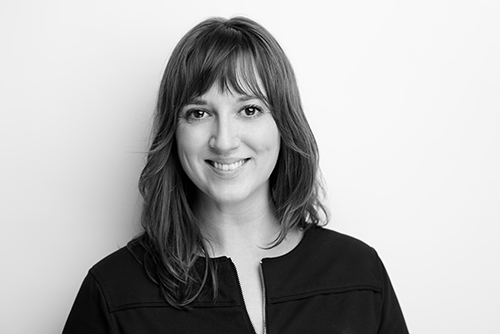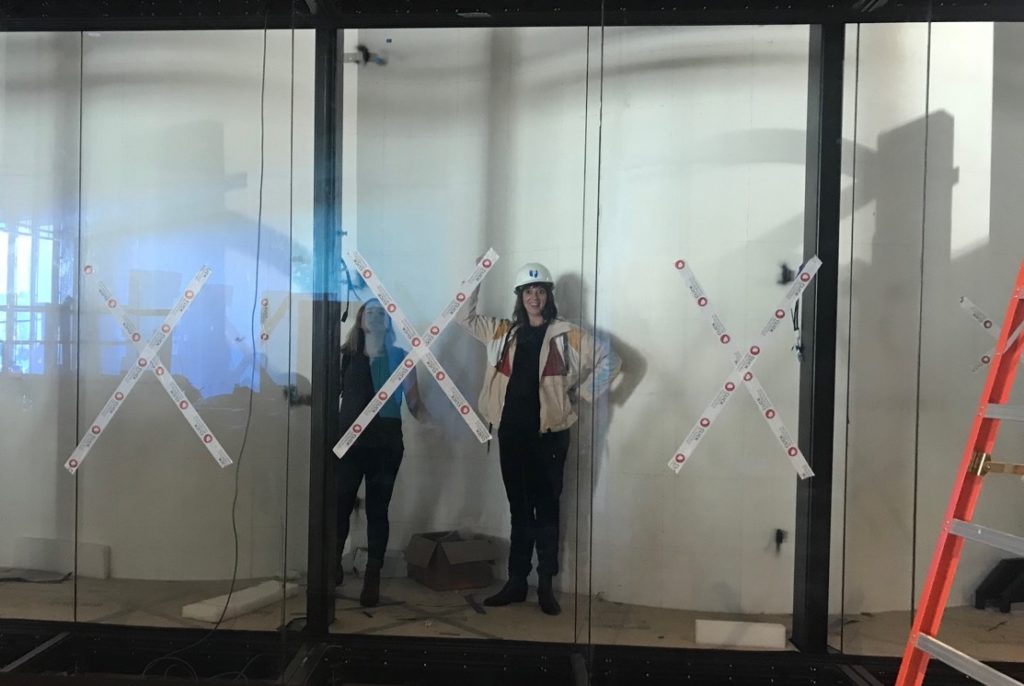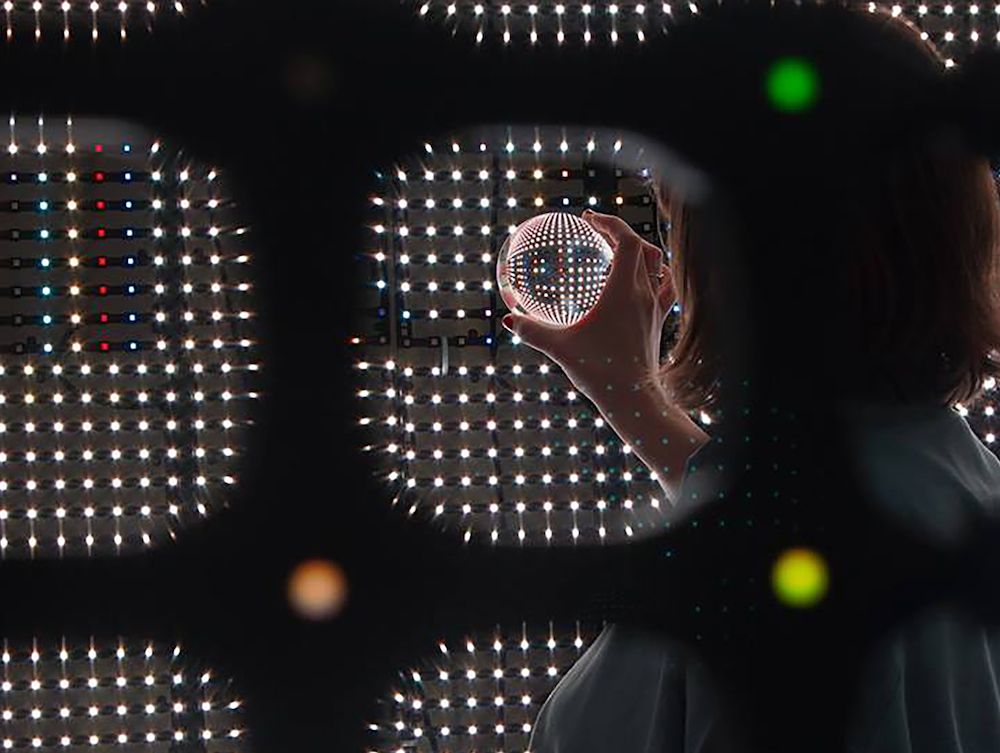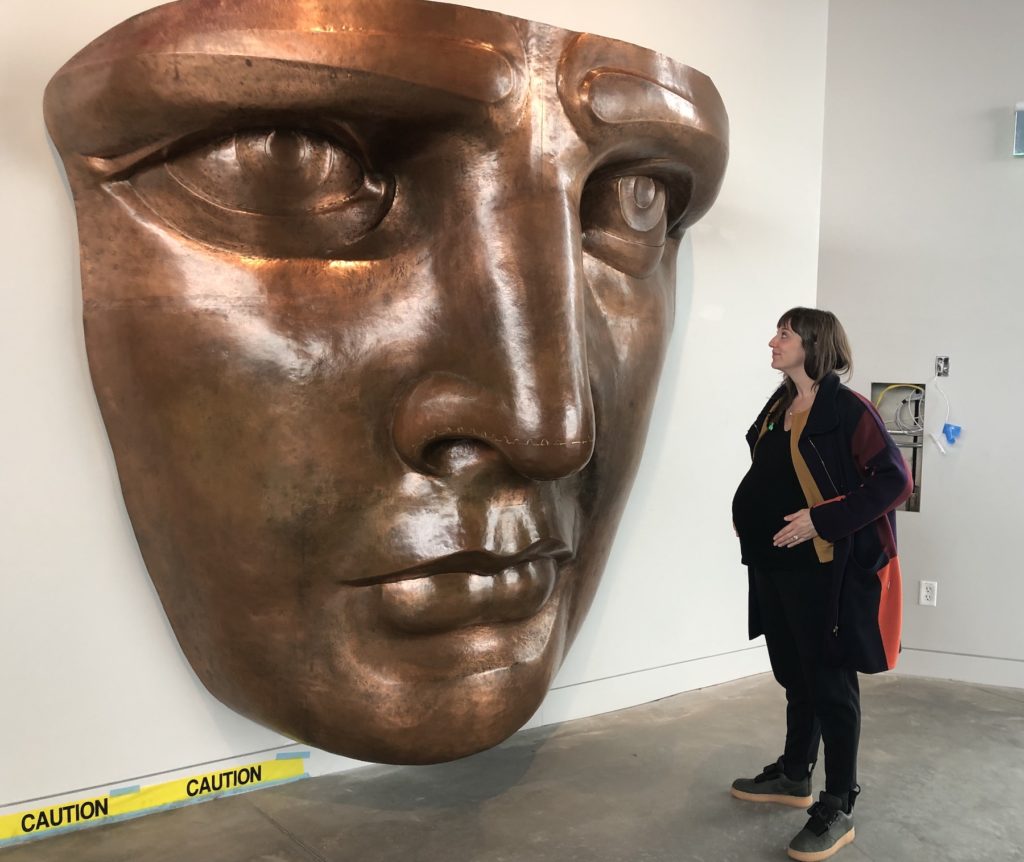Ladies of Liberty: Emily Webster, Head of Media Environments at ESI Design
Posted June 13, 2019
Earlier this month, the new Statue of Liberty Museum opened on Liberty Island with experience and exhibits by ESI Design. The new museum is part of a $100 million Liberty Island-wide beautification effort that is funded by our clients, The Statue of Liberty-Ellis Island Foundation.
To celebrate we’re sharing the stories of some of the talented people who have worked for over five years to bring this world-class museum from concept to opening day.
In this edition, you’ll hear from Emily Webster, ESI Design’s Head of Media Environments, who worked on the experience and exhibit design for the museum. Emily brought her experience as a designer of experimental implementations of technology to the design of the museum to create engaging immersive and interactive experiences.
 Name: Emily Webster
Name: Emily Webster
Job Title: Head of Media Environments, ESI Design
Years of Experience: 10+
Age: 35
Nationality: United States
Languages Spoken: English and Turkish
Education: Bachelor of Architecture from the University of Colorado, and a Master of Professional Studies from Interactive Telecommunications Program (ITP) at New York University
What was your first encounter with the Statue of Liberty?
Emily Webster, Head of Media Environments: My first visit to the Statue of Liberty was when I was around 28 years old. I was visiting New York to tour graduate programs and had the Statue of Liberty on my must-see list (as most tourists do!). My friend and host obliged, so we went to Liberty Island on a blustery and rainy fall day. It was gray and cold out, but I remember being impressed with her steely stare, and the formidable power that she exuded. We didn’t have tickets to go inside the Statue or Pedestal, so we walked around the Island, looking back at the Manhattan skyline…I think in those moments I knew that I wanted to be based in New York.
What was your role on the project? What did that mean for you day-to-day?
EW: For me, working on the experience and exhibit design of the Statue of Liberty Museum has been a 6+ year adventure. In the early days, our team was ideating around big concepts. How do you capture the essence of Lady Liberty and the ideals she represents? How should these stories be told? We waded through loads of historical documentation, literature and artifacts to assess the full spectrum of how she impacted the world. We also had many conversations with scholars who sat on an advisory history committee to help ensure that we were representing her story accurately. With all this research and context, we were able to define major themes in the museum and group those themes into the sub-areas that became the Immersive Theater, the Engagement Gallery and the Inspiration Gallery.
We then began to discuss how a visitor should experience these stories. We wanted visitors to be able to both digest the history and contribute to the collective understanding of what “Liberty” means. Where do we want people to learn vs. contribute? This helps us determine where should there be passive experiences, and where should there be interactive experiences, ie where do we want people to learn vs. contribute? How long should each of these experiences be? What should visitors be doing? What should they be touching? Should the museum move through a linear timeline or be open ended? Working through these and many more questions allowed us to develop a strong narrative arc, curate what people would see along the way and make sure that the museum has clarity in presenting this wealth of information to visitors.
In the final design phase of the project, we started to define materials, technical specifications, specific artifacts, graphics and the ‘script’ (the words on all of the interpretive panels throughout the museum). Together with our clients, we had weekly meetings to align on site progress. And we began to coordinate more heavily with our partners, architects FXCollaborative, the general contractor Phelps Construction Group, and of course our team members from the National Parks Service and SOLEIF. During the Production Oversight phase ESI Design also recommends any additional partners necessary to help bring our designs to life. For the Museum, this included hardware systems integrators, software developers, and exhibit fabrication partners. Once we have found our partners, production begins with those teams and continues through to the museum’s opening.

Meanwhile, the hardware systems are being tested and built, and the software is beginning to be developed. Mock-ups, prototypes and beta versions of these systems were built and tested to ensure that we were anticipating any challenging installation issues and addressing them before we got to site. We were also reviewing various iterations of the scripts for both the Immersive Theater film and the museum’s exhibits to make sure they are cohesive with the larger narrative for the museum.
Many other detailed elements were being defined as well: signage, user interfaces for all the interactive screens, control systems, lighting systems, audio systems, artifacts, audio tour guides, ADA requirements, network integration, structural coordination…many other pieces! This is why ESI Design has such a diverse set of team members on staff. All of us have a specific skill set that allows us to oversee elements of a project in detail.
In our final steps on the project, we went into commissioning mode where we would review all of the work being produced by our partners to ensure that it was installed correctly and functioning as designed.
You just opened a new museum for the Statue of Liberty — how does that feel? What does that mean to you?
EW: The process of creating a museum to provoke conversations about the idea of liberty has been incredibly meaningful to me. The fact that our nation’s symbol of liberty is a woman is meaningful to me. Realizing how far reaching the Statue is as an icon has also been meaningful to me.
I was pregnant during the final stages of the museum’s construction and when the museum was opening. As I walked through the museum carrying a yet-to-be-born little human, I contemplated the future from an entirely different perspective. It felt immensely important that we were building a museum where the idea of Liberty could be discussed, debated, and upheld.
Why is having a museum dedicated to the Statue of Liberty important?
EW: This museum dedicated to the Statue of Liberty is hugely important. Lady Liberty is so much more than a colossal statue. She represents colossal ideals, but those ideals are very fragile. The more we can encourage people to be engaged in the ideas of liberty and democracy, the more diverse and interwoven the world’s ideas will be.

After working on this project, has your concept of liberty evolved?
EW: I wouldn’t say that the idea of liberty has changed for me so much as its become more ingrained. From the outside you can easily perceive the Statue of Liberty as just another tourist destination. But the stories, recollections and anecdotes I’ve heard over the the past six years have shown me that the idea of liberty is richly diverse and is as unique as the individual who speaks on the topic.
Do you have a unique/special connection to Lady Liberty?
EW: We are both women!
What were the steps in your journey to this iconic project?
EW: I often wonder how a small-town girl from Wisconsin became one of the lead designers for the museum of the most iconic woman in the world. Looking back, though, the diversity of my career path has woven together in an interesting way that has led me to this incredible opportunity.
 As a designer, artist and producer, my focus has been on the experimental and artistic use of technology at an architectural scale. And I am most fascinated by how people move through space, and how a space can be activated to express a narrative. In my youth, I studied various forms of dance. This early training was formative for me and my future career in the architectural field, and is what led me to study Architecture at the University of Colorado. After graduating, I worked in production and set design for David LaChapelle and the Independent Film Channel. It was here that I was able to quickly build fictitious worlds that needed to be architecturally accurate and convincing, but they were temporary. Disliking the impermanence of the production industry, I transitioned into permanent installations and began designing, developing and programming large scale water features for WET Design. My experience as a dancer applied to this new style of experience driven work, as I programmed water jets to sway and pulse to music. Becoming more and more interested in technology, I went back to school to complete a Master’s in interactive technology at NYU’s Interactive Telecommunications Program (ITP), which set me on my path towards dreaming—and realizing—elaborate, thoughtful immersive experiences. After graduate school, I moved to San Francisco to work with artist Jim Campbell, a pioneer in electronic sculpture and LED artwork. We developed a performance for Lines Ballet Company called “Constellation” that toured internationally. This work synthesized my experience in dance, dynamic environments, programming and custom hardware into a single performance. I returned to New York to join our experience design studio here at ESI Design, and I now oversee the creation of large-scale dynamic experiences and environments ranging from eBay’s corporate campus, abstract light and data sculptures, and now the Statue of Liberty Museum.
As a designer, artist and producer, my focus has been on the experimental and artistic use of technology at an architectural scale. And I am most fascinated by how people move through space, and how a space can be activated to express a narrative. In my youth, I studied various forms of dance. This early training was formative for me and my future career in the architectural field, and is what led me to study Architecture at the University of Colorado. After graduating, I worked in production and set design for David LaChapelle and the Independent Film Channel. It was here that I was able to quickly build fictitious worlds that needed to be architecturally accurate and convincing, but they were temporary. Disliking the impermanence of the production industry, I transitioned into permanent installations and began designing, developing and programming large scale water features for WET Design. My experience as a dancer applied to this new style of experience driven work, as I programmed water jets to sway and pulse to music. Becoming more and more interested in technology, I went back to school to complete a Master’s in interactive technology at NYU’s Interactive Telecommunications Program (ITP), which set me on my path towards dreaming—and realizing—elaborate, thoughtful immersive experiences. After graduate school, I moved to San Francisco to work with artist Jim Campbell, a pioneer in electronic sculpture and LED artwork. We developed a performance for Lines Ballet Company called “Constellation” that toured internationally. This work synthesized my experience in dance, dynamic environments, programming and custom hardware into a single performance. I returned to New York to join our experience design studio here at ESI Design, and I now oversee the creation of large-scale dynamic experiences and environments ranging from eBay’s corporate campus, abstract light and data sculptures, and now the Statue of Liberty Museum.
Since you started your career, what’s the biggest change you have seen in the world of design?
EW: We used to have to convince people that designing “experiences” rather than environments was necessary. Now our clients seem to understand that experience design is not only good to have, but critical for the success of their project.
What advice would you give to your younger self starting a career in design?
EW: I would tell myself that artistic careers do exist. And to be passionate about what you do. Passion will get you further than any other professional motivator. If you don’t love what you do, change careers.
If you were giving a tour of the new museum, what would be your top highlight?
EW: My favorite parts of the museum are some of the more subtle aspects. I like the symbolism of the curving walls and the slatwork on the Immersive Theater and gallery walls, which references Lady Liberty’s robes. I like how the image of Bartholdi’s studio in Constructing Liberty is brought to life using projection to highlight details within the image. And I love how the soundscapes in Opening Ceremony, Welcoming Immigrants and Becoming Liberty layer together to elicit a patriotic and reverent tone but also one that expresses the momentous excitement that came along with seeing such a colossal statue for the first time. Hearing that soundscape while standing amongst such historic imagery and looking out toward the Statue is pretty impactful.
To read the rest of the interview series, click here. If you have any questions for Emily, sound off in the comments!



Join The Conversation